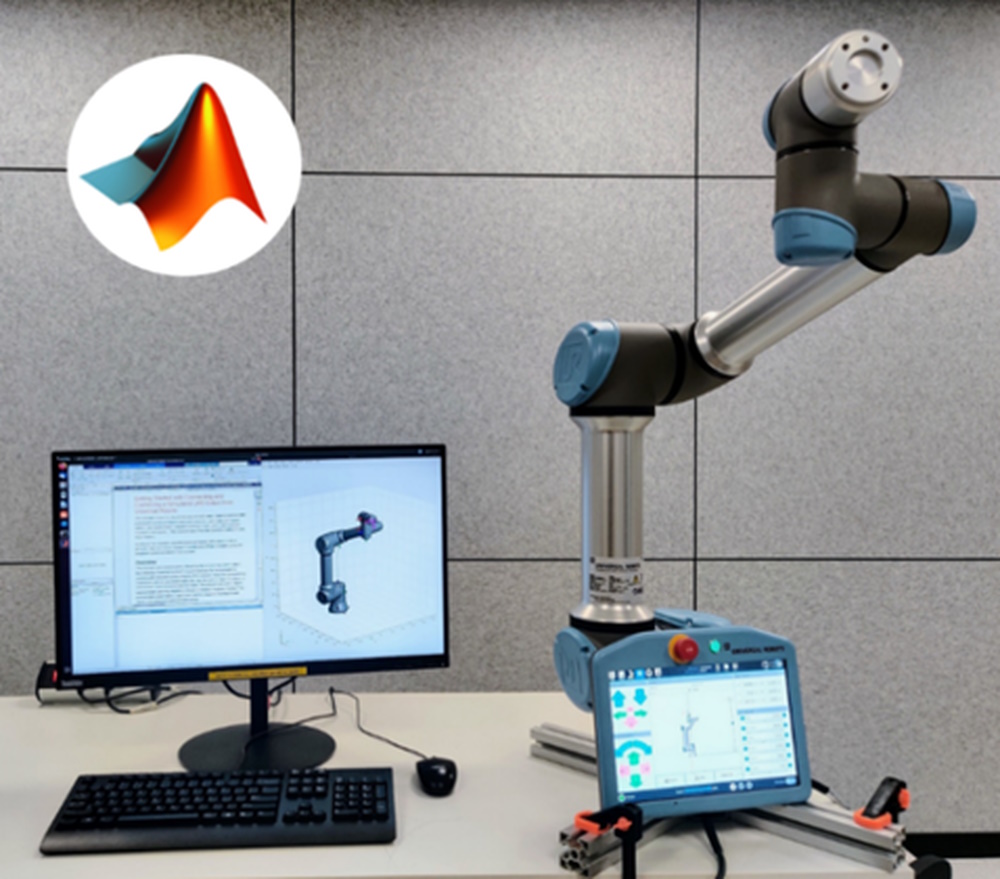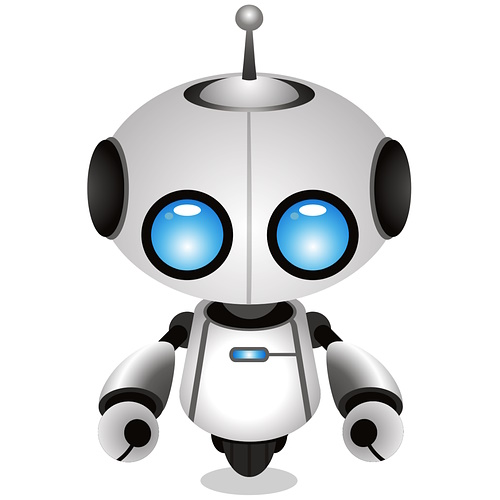Is it just me, or is everyone fascinated by the idea of humanoid robots in general and intelligent humanoid robots in particular? Just saying this has left (what I laughingly call) my mind buzzing with robot-related nuggets of knowledge and tidbits of trivia.
I remember watching The Jetsons animated sitcom on TV when I was a kid circa 1962/63. Looking back, it’s funny how this program’s weird mix of futuristic (flying cars) and retro (vinyl record players) seemed to make perfect sense at the time (in my own defense, I was only 5 or 6 years old). Thinking back to how rudimentary the animation was in those days of yore, I was just trying to imagine what a young me—a mini Max, if you will—would have thought had he seen the 2005 computer-animated Robots movie starring aspiring young inventor Rodney Copperbottom.
Then there was Lost in Space, which aired between 1965 and 1968. This featured a robot that was known and addressed, rather unimaginatively, as “Robot,” and whose prime purpose appeared to be to exclaim, “Danger Will Robinson!” Season 1 was filmed in black and white, while seasons 2 and 3 were shot in color. I mention this only because I thought they were all filmed in black and white at the time. This was because the only televisions I got to watch were at our house and my aunt and uncle’s house up the road, and both of these sets were black and white.
And who amongst our number could forget the classic 1956 movie Forbidden Planet. Featuring Robby the Robot, the story-line centers on a crew of Earth explorers who land their starship on the planet Altair IV. Sad to relate, although there are rumors to the contrary, it appears that the legendary Altair 8800 computer was not named after the planet in Forbidden Planet (it may, however, have been named after Altair VI from the Amok Time episode from Star Trek: The Original Series). (Since this machine was based on the Intel 8080 CPU, I have long wondered from whence the 8800 portion of its moniker came—if you have any intelligence on this, I’d love to hear it.)
More recently, I enjoyed the first (free) episode of Hello Tomorrow on Apple TV+. Although this is set in a futuristic world and involves a shady salesman selling homes on the moon, there’s a very compelling retro 1950s vibe going on with respect to things like clothes and the look-and-feel of technology. It’s cool to watch the cars and the robot bartenders levitating their way around, for example.
As a young lad, I also loved reading the robot-related short stories in Asimov’s I Robot and The Rest of the Robots, along with his longer robot-related tales, including (I’ve mentioned these before) The Caves of Steel, The Naked Sun, and The Bicentennial Man.
Another of my favorite classic science fiction authors is Clifford D. Simak, many of whose tales included robotic characters. In particular, I’m thinking of Destiny Doll, which I’m currently in the process of re-reading, and City, which is a “must read” as far as I’m concerned. Furthermore, if you are in a thought-provoking mood and wish to have your thoughts soundly provoked, then may I make so bold as to recommend The Penrose Series (Twisted Metal, Blood and Iron, and Stories from the Northern Road) by Tony Ballantyne.
Of course, we also have the not-so nice robots, like Box (a robot designed to capture and preserve food) in the 1976 film Logan’s Run and the eponymous machines in the 1984 Terminator movie. More recently, my eyes still water when I think about “that scene” in the middle of Mother/Android on Netflix—the one that leaves us reasonably convinced that tap-dancing isn’t in our hero’s future. (If you haven’t seen it, I won’t spoil it. If you have seen it, you’ll know which scene I mean.)
I must admit that I did enjoy the 2022 M3GAN movie, but I also think it’s fair to say that watching this has put me off recommending a robot babysitter to any of my friends.
One of my favorite books is the 1987 novel Great Sky River by Gregory Benford. This is set in tens of thousands of years in the future when humans have spread throughout the galaxy. As they approached the galactic center, they ran up against the Mechs—a civilization of machines that have evolved to see all biological civilizations as unstable and dangerous. Although the Mechs probably no longer remember their origins (we never get to ask them because they are too busy trying to eradicate us), it’s obvious that—deep in the mists of time—they must have been created by biological beings, which leads to the question: “What happened to those biological creators?”
When we consider the current explosion in artificial intelligence (AI) and machine learning (ML) capabilities, coupled with dancing humanoid robots that can also perform gymnastics, it’s hard not to think to oneself, “Are we 100% sure where we are going with all this?”
I know, I know, I’m a little ray of sunshine, aren’t I? The thing is that I’m a bit conflicted, because—as I said earlier—I’m fascinated by the idea of humanoid robots in general and intelligent humanoid robots in particular. We’ve even talked about various aspects of this in recent columns here on EEJournal, such as BeBop RoboSkin Provides Tactile Awareness for Robots (my mind is still boggled at the thought of a robot with a finger sensitive enough to read Braille) and Halodi’s Humanoid Robots are Already Amongst Us! Also, now I think about it, Cars and Robots with Smart Skins That Can Feel and Want to Rule a Robot Empire? InOrbit Can Help!
Until recently, most of the robots in the world typically fell into a limited number of camps. For example, we have the great big industrial monsters found in places like automobile assembly lines. These are usually to be found in cages, the purpose of which is not to keep the robots in, but rather to keep humans out. This is because these industrial robots combine tremendous strength with almost no awareness of their surroundings (not unlike myself, apart from the tremendous strength part).
Then we have robotic manipulators in the form of high-speed pick-and-place machines that can do amazing things with things moving at high speed on conveyor belts (admit it, you’re thinking of the Lucy and the Chocolate Factory episode from I Love Lucy, aren’t you? Me too!).
Can you believe this first aired in 1952, which means it’s 71 years old as I pen these words. Now I’m feeling old. Now I’m feeling sad. Now I’m feeling like some chocolate would cheer me up.
And, of course, we have mobile robots, from big ones that shuffle things around warehouses to little ones like Roombas that kindly vacuum our houses while using their cameras and other sensors to map our homes (what could possibly go wrong?).
Most recently, we have the concept of cobots (collaborative robots) that work closely with humans in shared spaces. I recently saw a cobot that was like the top half of a person (torso, hands, arms, head) mounted on a movable command chair-like base. Unfortunately, I am forbidden to speak further at this time. Suffice it to say that I was reminded of Davros from Doctor Who without the homicidal desire to wipe out life as we know it (at least, without such a desire at the time of this writing*).
*As far as I know, but what do I know? Now I’m thinking about the Robopocalypse book by Daniel H. Wilson, the Next TV series from 2020, and the current Mrs. Davis TV series that manages to be funny and scary at the same time.
I’m sorry. I keep on wandering off into the weeds. The reason I started writing this column in the first place is that I was just chatting with the folks at MathWorks (creators of MATLAB and Simulink) who were telling me that they’ve joined the Universal Robots ecosystem in the form of the UR+ Program (see also MATLAB for Universal Robots). From the associated press release we discover the following:
MathWorks received the UR+ certification for MATLAB), a programming and numeric computing platform that provides software tools and algorithms for designing, simulating, testing, and deploying robotics applications, including those for Universal Robots’ cobots.
Robotics engineers use MATLAB for specialized or sophisticated cobot applications that are difficult to program using the UR teach pendant or graphical-based programming tools, including applications that incorporate machine learning, deep learning, computer vision, optimization, sensor fusion, and advanced signal processing. MATLAB provides AI capabilities for cobots to move more efficiently and productively by perceiving dynamically changing workspaces and sophisticated robot algorithms. Engineers can verify their UR cobot applications by connecting MATLAB to URSim, a simulation software for robot programs, or UR hardware. MATLAB support for Universal Robots is compatible with the entire e- and CB- series of Universal Robots.
 Robotics engineers use MATLAB for specialized or sophisticated cobot applications that are difficult to program using the UR teach pendant or graphical-based programming tools (Source: MathWorks)
Robotics engineers use MATLAB for specialized or sophisticated cobot applications that are difficult to program using the UR teach pendant or graphical-based programming tools (Source: MathWorks)
“Who or what is Universal Robots?” you ask. Well, I’m ashamed to say that I was not previously aware of this company, but now I’m eager to learn more. I gleaned the following from the aforementioned press release:
Universal Robots aims to empower change in the way work is done using its leading-edge robotics platform. Since introducing the world’s first commercially viable collaborative robot (cobot) in 2008, UR has developed a product portfolio including the UR3e, UR5e, UR10e, UR16e, and UR20 reflecting a range of reaches and payloads. Each model is supported by a wide selection of end-effectors, software, accessories and application kits in the UR+ ecosystem. This allows the cobots to be used across a wide range of industries and means that they can be redeployed across diverse tasks.
Well, all I can say is that this makes perfect sense to me. The guys and gals at Universal Robots have a cornucopia of cobots, while the chaps and chapesses at MathWorks have all the tools required to model every aspect of this cobot cohort. You can import a model of the mechanical portions of a cobot developed using a CAD or 3D modeling tool into a Simulink 3D Animation virtual world. You can model the physical characteristics of the cobot (mass, inertia, etc.). You can create models of the sensor and control algorithms. And you can bring all of this together to form a digital twin (don’t get me started about the various MATLAB Add-On Toolboxes, including the Statistical and Machine Learning Toolbox, the Deep Learning Toolbox, and the Predictive Maintenance Toolbox).
So, what do you think? Is it time for us to leap into the fray with gusto and abandon and embrace this brave new world with open arms, or is it time for us to start gathering some emergency supplies and preparing a hidey-hole under the bed? As always, we certainly do live in interesting times.





